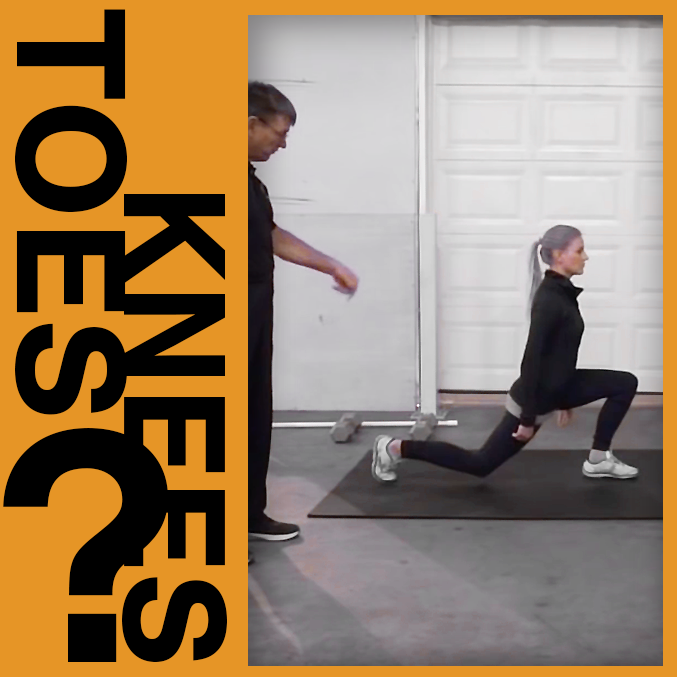Knees in Front of the Toes?

One of the prevailing ideas in strength coaching is that during squats, the knees should not travel in front of the toes to avoid placing excessive stress on the knees. This advice is also prevalent in physical fitness classes; for example, aerobic instructors often tell their students to keep their knees back when they squat and lunge. There’s just one problem – it’s impossible!
You simply cannot perform most athletic activities, or for that matter simply move, without at least one knee going in front of the toes of the same foot. Take a giant step, stop…then look at your rear knee. If it’s not in front of your knee then you belong to a different species! Now put your hands on your hips, perform a lunge so that your front knee does not travel in front of the toes. Great -- but again, what about the back knee? Sorry, but having the knees in front of the toes is a natural part of human movement.

From an empirical perspective, consider that in Japan it has been a common practice to sit on the floor during meals and other activities. Dr. Mel Siff discussed this in his book, Facts and Fallacies of Fitness, “The Japanese sit on the floor with their knees folded fully flexed beneath them bearing all their bodyweight for prolonged periods daily without producing an epidemic of knee injuries.” He adds that sports such as wrestling and fencing, which have a relatively low risk of knee injury, involve extending the knees far in front of the toes for prolonged periods.
One of the sports with the lowest incidents of knee injuries is weightlifting. Not only do these athletes squat all the way down, extending their knees over their toes, but they bounce out of the bottom position. Also, in the jerk portion of the clean and jerk, the back knee moves well in front of the toes during the split. Yes, the front shin in a jerk should be perpendicular to the floor, but this is because it’s a stronger position because the knee is not as bent. Likewise, during a hip flexor stretch, it’s easier to stretch the muscles that create hip flexion if the front knee stays over the toes, not in front of them.

One reason that deep squats seldom cause problems is that the deeper the squat, the lower the shearing forces (i.e., forces that try to pry the joints apart). In fact, in a paper published in Sports Medicine in 2013, the sports scientists found that the highest stresses on the knee were not in the deep squat position, but at 90 degrees. Further, the researchers said, “Concerns about degenerative changes of the tendofemoral complex and the apparent higher risk for chondromalacia, osteoarthritis, and osteochondritis in deep squats are unfounded.
Finally, in a study published in 2003 by the University of Memphis, researchers discovered that placing a barrier in front of the knees to restrict the forward motion of the knees dramatically increases the torque on the hip.
Knees in front of the toes? No problem!
